


















VOL.16 NO 1 PAGES 40
FEBRUARY2023,`50
Dr Sanjoy Chatterjee Senior Consultant Clinical oncologist, Tata Medical Center and Principal Investigator from Tata Medical Center for CHAVI
INTERVIEWS






















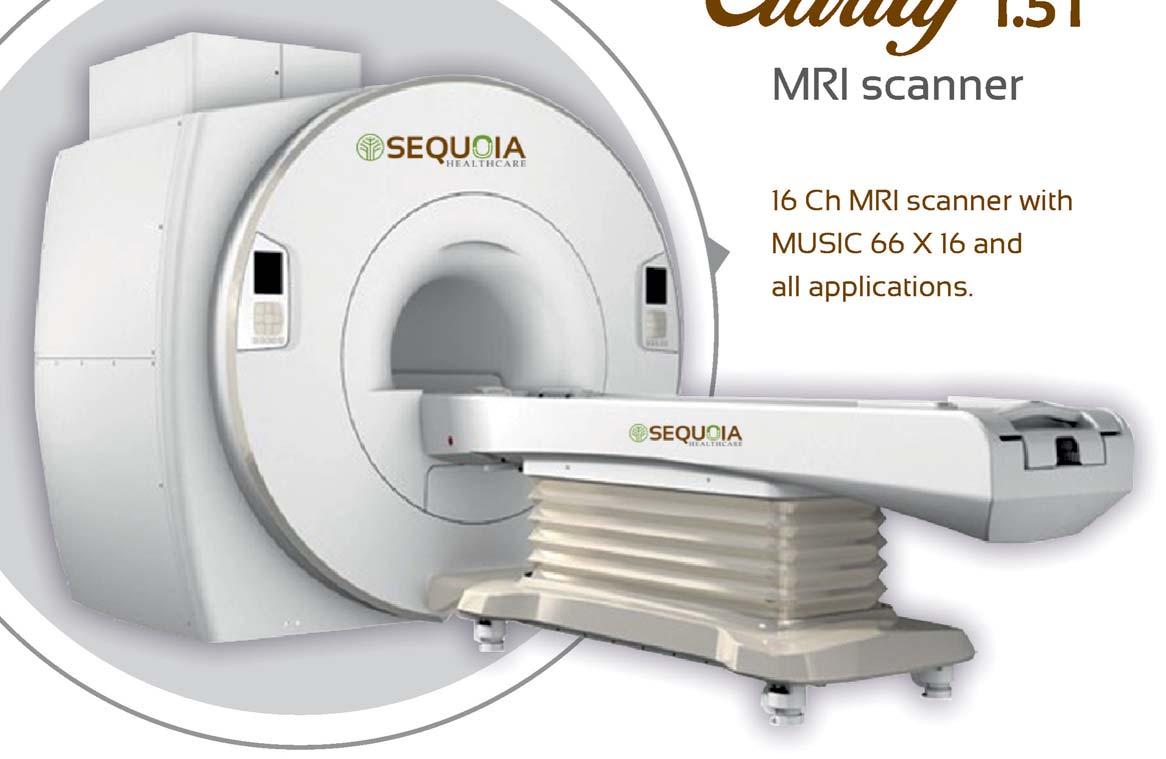
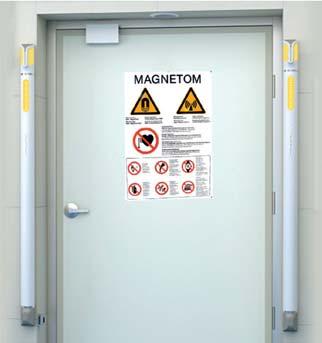






Pre-OwnedGE1.5Tand 3TMRI
DedicatedMRItestingand repairfacility
In-houserepairsofall majorcomponents includingRFandGradient amplifiers.
AnnualMaintenance Contracts
MRIpre-cooling andre-vacuuming bay
MRIcomponent repairsandtesting
FerroMagneticDetectors
DesignedanddevelopedinIndia.Patentedtechnology.


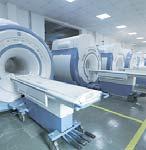
Uniqueauto"MRISCANON"detection. Completepatientsafetyandpatientpreparationusing in-housesensors.



Economicalandeasytoinstall.
Vendorneutral.
Coilrepairsand testing
MEDIRAYSCORPORATION
1105,LodhaSupremus,Kanjurmarg(E),Mumbai-400042.India
+91-22-25779131.info@medirays.in

I SO 1 3 4 85 :2 0 1 6 I SO900 1:2 0 1 5
ViveckGoenka
Sr.Vice President-BPD
Neil Viegas
Asst.Vice President-BPD

Harit Mohanty
Editor
Viveka Roychowdhury*
BUREAUS
Mumbai
Lakshmipriya Nair,Kalyani Sharma
Delhi
Akanki Sharma
DESIGN
Art
Pravin Temble
Senior Designer

Rekha Bisht
Senior Artist
Rakesh Sharma

Digital
Viraj
Ashish Rampure
Debnarayan Dutta



CONTENTS February2023 EXPRESS HEALTHCARE 7
Chairman of the Board
Director
Team
Team
Mehta (Head of Internet) Marketing
Rajesh Bhatkal
Ambuj Kumar
Production Co-ordinator
& Coordination
DhananjayNidre Scheduling
CIRCULATION Mohan Varadkar Express Healthcare® Regd.With RNI No.MAHENG/2007/22045.Postal Regd.No.MCS/162/2022 - 24.Printed and Published byVaidehi Thakar on behalf of The Indian Express (P) Limited and Printed at The Indian Express Press,Plot No.EL-208,TTC Industrial Area,Mahape,Navi Mumbai-400710 and Published at Mafatlal Centre,7th floor,Ramnath Goenka Marg,Nariman Point,Mumbai 400021. Editor: Viveka Roychowdhury.* (Editorial & Administrative Offices: Mafatlal Centre,7th floor,Ramnath Goenka Marg,Nariman Point,Mumbai 400021) * Responsible for selection of news under the PRB Act.Copyright © 2017.The Indian Express (P) Ltd.All rights reserved throughout the world. Reproduction in anymanner,electronic or otherwise,in whole or in part,without prior written permission is prohibited. Innovations brought in by medtech players can be vital in improving healthcare delivery and meet underserved needs | P-12
HEALTHCARE
CANCER CARE P10: INTERVIEW DR SANJOYCHATTERJEE Senior Consultant Clinical oncologist,Tata Medical Center and Principal Investigator from Tata Medical Center for CHAVI P18: INTERVIEW SRIKANTH SURYANARAYANAN Head-Imaging, GE HealthCare 21 AI IN MEDTECH MEDTECH Vehicles for purposeful innovation Medtech startups 22 DR MANOJ CHAWLA, DIABETOLOGIST AND EXECUTIVE MEMBER,RSSDI
Pushkar Waralikar
POLICY
IT
Union Budget 2023-24: Good for healthcare, but not enough
Given that this is the last full budget before the general elections ofMay 2024, Finance Minister Nirmala Seetharaman perhaps decided to play safe rather than attempt bold reforms in a key sector like healthcare.The result is a Band-Aid budget, which postpones the real healing for another time.

To be fair,Union Budget 2023-24 does attempt to look beyond COVID, while tracking it in the rear-view mirror. It continues the trends of marginal increase in the allocation for healthcare, from 1.4 per cent of GDP in FY 19 to 2.1 per cent of GDP in FY 2023, but it still falls short of the promised 2.5 per cent. Of course, a3.4per cent hike over the previous year’s allocation seems minuscule but realistically speaking, nothing was going to match last year’s massive COVID-related hike of 16.59 per cent.
The Finance Minister also had to balance COVID-related spends while allocating more funds to other health concerns. Hence the proposal to set up amission to eliminate sickle cell anaemia by 2047 is a welcome step. However, there has to be clarity on how this will be achieved, as previous such missions, like the elimination of TB by 2025, need to be brought back on track.
The most welcome facet of the Union Budget 2023-24 is that it finally recognises the pivotal role, and huge shortage, of nursing and allied staff in the country. As per the budget proposal, Rs 33 crore will be allocated to set up 157 new nursing colleges. Since these will be co-located within existing medical colleges, some of the infrastructure is already in place so one hopes that we see a speedy implementation of this proposal. This represents a 67 per cent increase in allocation as compared to last year's budget (Rs 20 crore).
But setting up nursing colleges is the first step. Can we ensure the quality of nurses being trained in these colleges? Our medical colleges already have a shortage of teaching staff. We should not focus on quantity and lose sight of quality.
Secondly, can we create attractive enough career paths for the nurses and allied staff who graduate from these newly minted nursing colleges? In addition, how can we ensure we retain them within the country? Or are we simply creating nursing resources for export, to better remunerative and more satisfying opportunities across the world?
Thirdly, how can we upskill the existing staff, especially as the budget continues the digital push? With the announcement ofthree centres of excellence for artificial intelligence, digital health is
one key area where AI can play a huge role in improving patient outcomes as well as increasing efficiency. However, this must go hand in hand with the implementation of the proposal to introduce the National Data Governance policy, to enable access to anonymised data, so that there are enough safeguards to ensure security of patient data and confidentiality.
Another major announcement in the budget was the proposal to set up ‘dedicated multidisciplinary courses for medical devices … to ensure skilled manpower for futuristic medical tech and high end manufacturing and research.’ While the skilling initiativeis appreciated, medical device companies were disappointed, to say the least, that the budget did nothing to encourage the local manufacturing of medical devices. Recommendations like increasing customs duty on cheaper imports, reducing GST and monitoring trade margins were not implemented. Medical device leaders are warning that imports of medical devices, especially from China, are increasing and remind us of the grave situation we faced as a country, during the COVID pandemic, when supply chains were disrupted. While the government encouraged many entrepreneurs to step up to the cause and start making medical devices, many of these units are now reportedly not able to sustain against cheaper imports. Investors are losing interest and funding is drying up, leading many smaller units to shut shop.
While many schemes got a haircut, flagship initiative Ayushman Bharat-Pradhan Mantri Jan ArogyaYojana (AB-PMJAY) got a 12 per cent increase, with the allocation of Rs 7,200 crore this year. The government is obviously hoping to expand the scheme but whether this increased allocation will encourage more participation from private healthcare providers is the big question.Hospital managements remain upset that many of their long-standing recommendations, (rationalising of embedded indirect taxes like GST, for instance), remainunaddressed.
Increased collaboration between the public and private sector stakeholders, be they healthcare facilities or medical/nursing colleges, is the only logical way to speedily expand access to infrastructure and resources. But for that to happen, there needs to be trust between the stakeholders. And sadly, that’s in short supply these days.
VIVEKA ROYCHOWDHURY Editor viveka.r@expressindia.com viveka.roy3@gmail.com
EDITOR’S NOTE EXPRESS HEALTHCARE February2023 8
The result is a Band-Aid budget,which postpones the real healing for another time

















There is definite urgencyto upscale and enhance cancer care across India

Tata Medical Center and IITKharagpur recently launched fully annotated,relational, de-identified cancer image bank – CHAVI. Dr Sanjoy Chatterjee ,Senior Consultant Clinical oncologist,Tata Medical Center and Principal Investigator from Tata Medical Center for CHAVI in an interaction with Kalyani Sharma talks about this image bank and the objective behind it
Tell us about CHAVI?
CHAVI is a unique platform which allows open access collaborative research opportunity to develop futuristic India specific strategies to combat cancer. CHAVI was jointly developed by Tata Medical Center Kolkata, Department of Radiation Oncology and Indian Institute of Technology, department of Computer Sciences. Currently CHAVI allows access and banking of annotated clinical and radiological images which can then be analysed using cutting edge Machine Learning and Artificial Intelligence. Such analyses can provide valuable complimentary information to the currently available laboratory and imaging tests, such that a more personalised and a more accurate prognostication can be made.
What is the objective behind launching it?
The first image bank from India, CHAVI will provide annotated, structured imaging data from Indian patients, something that was completely lacking. Given that it is open access, the database images can be used from across the globe to find solutions for cancer. Importantly other centres from across India can use the structured CHAVI databank to enhance the CHAVI library such that more robust
models for cancer care can be developed.
Can you throw some light on the technologies that can revolutionise cancer care in India?
Indian patient specific models developed using Indian data is likely to allow more personalised care. CHAVI is a scalable open access database allowing collaborative BIG DATA related research to help cancer patients. CHAVI does not allow national but international collaboration to see how western models fair on Indian image signatures. Collaborative work on developing federated radiomic models has already started. MOU between Indian universities as well as Internationally renowned centres like University of Cambridge and University of Cardiff is in the final stages. In all, CHAVI has triggered tremendous interest globally and opens up possibilities that can allow precision medicine and personalised therapy for cancer in the near future.
What are your views on the scalability and accessibility of technology in cancer care in India?
The technology used for developing CHAVI is simple but safe and secure. Investigators have used open-source tools and components for developing CHAVI and the CHAVI
EXPRESS HEALTHCARE February2023 10 CANCER CARE
INTERVIEW
Currently CHAVI allows access and banking of annotated clinical and radiological images which can then be analysed using cutting edge Machine Learning and Artificial Intelligence
databank is available as a public resource. The CHAVI repository is also deployed as a docker container which can be combined with modern
cancer research.
How strong is our cancer care infrastructure and what is the need of the hour?
There is a definite urgency amongst governments and NGOs like the Tata Group to upscale and enhance cancer care across India. However, a
lot more needs to be done to quality assured futuristic personalised allow care near patients’ home. CHAVI is an important cog in the wheel to
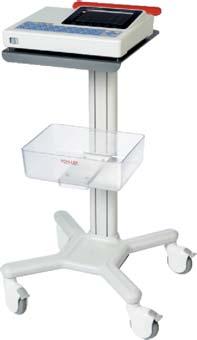
provide such futuristic solutions.
Kalyani.sharma@expressindia.com journokalyani@gmail.com
technology to scale the deployment in the future as required. Open sourcing of the CHAVI de-identification code is in process, and this should enable development of an open-source ecosystem to be developed around CHAVI.
Do you think cancer is ‘Next pandemic in the making’?
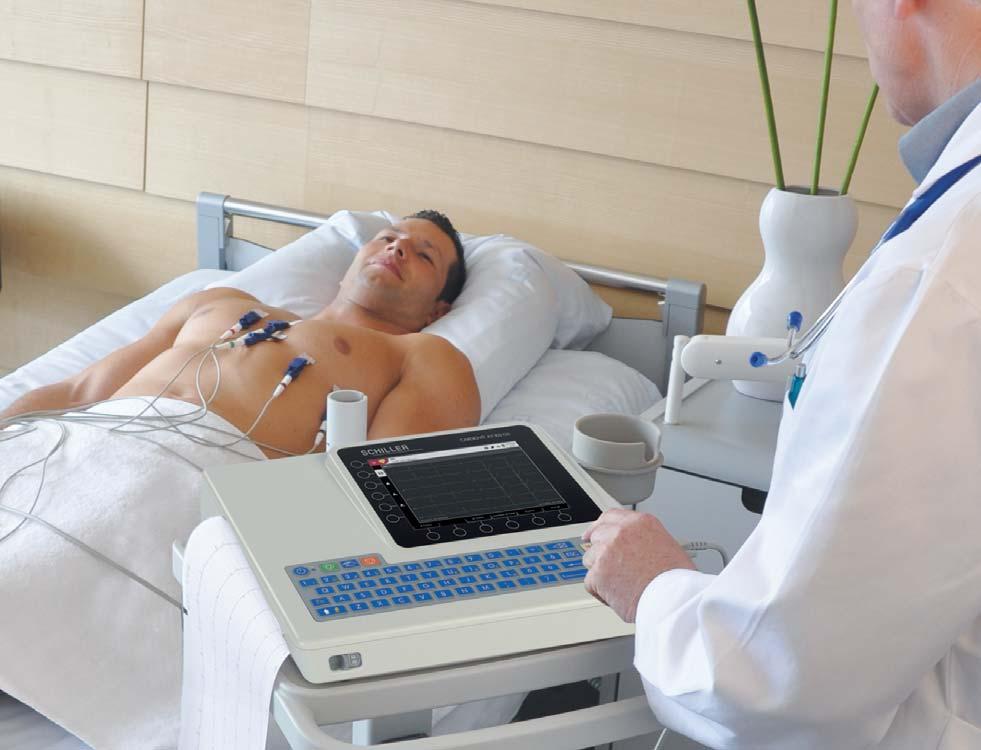
There is little doubt that cancer is a pandemic. Unfortunately, it is resource intensive draining patients mentally, physically and disrupting psychosocial aspects. Given the intensive strain it brings on resources of individuals countries, especially Low- and MiddleIncome countries must look at cost effective solutions of their own. CHAVI allows exact that as it provides the perfect platform free of cost to drive low-cost
(Note:Trolleyisjustforillustrationpurposeonly)
February2023 EXPRESS HEALTHCARE 11 ®
Indian patient specific models developed using Indian data is likely to allow more personalised care.CHAVI is a scalable open access database allowing collaborative big data related research to help cancer patients
Innovations brought in by medtech players can be vital in improving healthcare delivery and meet underserved needs





 ByKalyani Sharma
ByKalyani Sharma
EXPRESS HEALTHCARE February2023 12 cover )

February2023 EXPRESS HEALTHCARE 13
In the Union Budget 202324, the government has allocated Rs 283.5 crore for the Startup India Seed Fund Scheme in additional to a National Data Governance Policy which will be brought out to unleash inn ovation and research by start-ups and academia.
Nirmala Sitharaman in her budget speech mentioned, “Entrepreneurship is vital for a country’s economic development. We have taken a number of measures for start-ups and they have borne results.
India is now the third largest ecosystem for start-ups globally, and ranks second in innovation quality among middleincome countries.”
The pandemic itself presented an opportunity before healthcare start-ups. Especially, the innovations brought in by medtech players, helping in improving the overall healthcare delivery. While the last two years brought the much-needed attention to the start-ups ecosystem via medtech players mentoring them, it is now important to stabilise this progress. Hopefully, the slew the measures announced in the budget will also help in nurturing an ecosystem for sustainable medtech innovation for India and the world.
The budget also announced the implementation of dedicated multidisciplinary courses for medical devices to be supported by the government in institutions to ensure skilled manpower for futuristic medical tech and high-end manufacturing and research.
While talking about the medtech inn ovations, Gaurav Srivastava, Co-Founder & COO, HaystackAnalytics said, “Medical technology majors can rev olutionise the healthcare industry by designing and creating cutting-edge medical technologies and devices that enhance patient care and outcomes. They can also utilise their knowledge and abilities to optimise healthcare delivery systems, resulting in cost savings.
Medical technology majors can revolutionise the healthcare industry by designing and creating cutting-edge medical technologies and devices that enhance patient care and outcomes
Gaurav Srivastava


Co-Founder & COO, HaystackAnalytics
The new crop of medtech start-ups is creating novel technologies and proprietary,patented products for healthcare challenges facing the ordinary Indian
Dr Swadeep Srivastava
Co-Founder & President, India Health Link
Despite the pandemic's increased use of digital interventions,many medtech businesses have been hesitant to adapt to the new digital landscape of healthcare
Dr Vaibhav Kapoor Co-founder, Pristyn Care

Medtech startups can fast-track the digital revolution in India’s healthcare sector and extend the sector’s reach beyond tier I and II cities
Deepak Tuli

Co-Founder, Eka Care
Additionally, they can apply their expertise to conduct research and create new treatments for various medical conditions. Some potential areas of focus for medtech majors include telemedicine, AIbased diagnostic tools, the development of new medical devices, and the enhancement of clinical trial efficiency. Overall, with their unique skills and understanding, medtech majors are well-equipped to lead advancements in the medical field and make a substantial impact on healthcare.”
Dr Swadeep Srivastava, Co-Founder & President, India Health Link also highlights, “The new crop of medtech start-ups is creating novel technologies and proprietary, patented products for healthcare challenges facing the ordinary Indian. This new wave of medtech is driven by purposeful innovation associated with economic opportunities seen in Indian healthcare.”
Dr Vaibhav Kapoor, Cofounder, Pristyn Care stresses, “In India, innovations created by medtech start-ups are revolutionising primary and secondary care. A number of healthcare inn ovations have emerged in recent years in response to changing customer expectations, as seen in India's steady transformation of primary and secondary care. At this stage, digital treatments are successfully addressing patients' pain areas and improving the overall patient experience across the nation.”
Current landscape
IBEF predicts that the Indian medtech sector will stand at $50 billion by 2025. The entry of start-ups in this sector is changing and revolutinising the business models of the companies. The most prominent being the integration of start-ups working in this sector with tech companies which is expected to give a muchneeded boost to 3As (Accessibility, Affordability and Availability) of how healthcare is delivered in India.
Sharing his views on the
EXPRESS HEALTHCARE February2023 14 cover )
role of medtech startups in revolutinising the 3As of healthcare, Deepak Tuli, Co-Founder, Eka Care said, “Medtech startups can fasttrack the digital revolution in India’s healthcare sector and extend the sector’s reach beyond tier I and II cities to the vulnerable pockets of the nation. Indeed, suppose the government and India’s strong network of medical supply chains can keep on contributing to the acceleration of healthcare innovation. In that case, India has the potential to become a global medtech hub in the coming years.”
Throwing light on the current landscape, Rashmi Pimpale, CEO, RICH (Research and Innovation Circle of Hyderabad) mentions, “According to a market analytical study, the global market size for healthcare IT was around $167.4 billion in 2022. But more importantly, it is expected to grow at a compound annual growth rate (CAGR) of 17.9 per cent, reaching $609.1 billion by 2030. This figure is a testament to the size of the opportunity for medtech startups. This is especially true for India, where medtech startups are only in their nascent stage. According to a market trend analysis of medtech innovators by Deloitte, has shown that most medtech start-ups focus on the early stage of the patient’s journey (prevention, wellness, and diagnosis), instead of treatment. Many of these start-ups—almost 25 per cent—are leveraging AI or machine learning in their products or services. Notably, there’s been a shift from traditional inpatient settings (like clinics and hospitals) to home and point-of-care settings. Also, start-ups are showing a strong preference for SaaS, subscription-based, single-use, and disposable revenue models.”
Sharing his views on this, Amrit Singh, Co-founder, and CRO, Loop highlights, “There is a growing demand in India for healthcare products that provide real-time diagnosis,
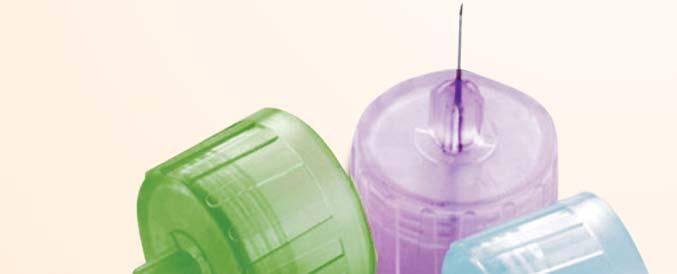
reduce healthcare costs and give accurate data for further analysis. This is what medtech startups need to focus oncreating cost-effective, highend, technology-enabled







healthcare solutions, which can help improve the wellbeing of millions of people in partnership with the healthcare service provider network.”



Eshika Phadke, Core team member-Pharma Healthcare and Digital Health Practice; Darren Punnen, LeaderMedtech and Digital Health Practice and Dr Milind
Antani, Leader-Pharma healthcare Medical deviceDigital Health Practicefrom Nishith Desai Associates also commented, “It is said “Crisis brings Opportunity”. The
















www.hmdhealthcare.cominfo@hmdhealthcare.com
PROMOTING PATIENTSAFETY INDIA’SMOST TRUSTEDBRAND ALABLEIN 31G&32G LABLEIN G&32G Precision,Engineered,Affordable&EasytoUse. V A A I 3 1 G P i i E i d Aff d E t February2023 EXPRESS HEALTHCARE 15
Scantowatch thetutorial
pandemic has provided that much needed fillip to a number of inn ovative and meaningful start-ups in the medtech space, penetrating almost every aspect of the healthcare ecosystem – from drug delivery to home care. Bridging the gaps that were felt in the healthcare delivery system, there has not only been a spurt in devices that are intended to improve patient care, but also technologies that make both healthcare and wellness more accessible to the general population. Using technology, the “accessibility” component of patient care is being achieved. Further, the government has not only been actively incentivising inn ovation, but has also began developing and implementing aregulatory framework to provide a boost to the Indian medtech industryon a global scale.”
Top trends and opportunities for medtech start-ups
As mentioned earlier, integration of tech with the startups in medical devices sector has been the top most trend in previous years and is expected to boom more in 2023 and beyond. AI on medical images, low cost point of care diagnostics have the potential to create impact with a force multiplier effect when deployed along with digital public goods launched by the government like NDHM.
Vinay K Mayer, DirectorMarket Research & Consulting, Asia Research Partners
LLP shares, “The medtech industry has seen tremendous growth in recent years, and it shows no signs of slowing down. Innova tion is vital to help maximise the potential of some start-ups, but thought needs to be given when analysing what developments are propelling this dynamic sector forward.”
He also highlights some of the key areas with greatest opportunity for medtech startups (see box)
Runam Mehta, CEO,


HealthCube also stresses that in 2023, the emphasis of the med-tech sector has to be on creating interoperable solutions that are advanced, easyto-use. She added, “Medtech start-ups are rapidly integrating advanced technologies such as AI, data analytics, IoMT, and mobile communications to create solutions for a wide range of challenges. In 2023, the emphasis of the medtech sector has to be on creating interoperable solutions that are advanced, easyto-use for anyone with a basic understanding of technology, and capable of operating in different climates and network coverage variations. There are specific trends that have gained momentum in recent times and will be pivotal for the growth of medtech startups. Over the years, we have seen how X-ray, USG, radiology, the growth of wearable technology, remote patient monitoring, integrated electronic health records, and genomics has benefited healthcare delivery and improved patient experience. With more than 1.4 billion people to take care of, most of whom reside in rural and remote areas, these medtech trends are truly going to be a gamechanger!”
Mentorship and scalabilityof medtech start-ups
Scalability and mentorship programmes together can play a major role in smooth development and growth of startups, where mentorships can give easy access to required resources and more importantly the guidance.
Neetha Joy, Director, ACT for Health believes that, “For innovations to reach India's mass population, it is important that they are able to demonstrate value to the government in order to become a part of the public health system. For this, it is essential for the medtech startup to have a very clear value proposition as well as enough clinical and real work evidence to demonstrate efficacy. The cost aspect


EXPRESS HEALTHCARE February2023 16 cover )
Medtech startups need to focus on - creating cost-effective, high-end,technology-enabled healthcare solutions
Amrit Singh Co-founder,and CRO, Loop
The medtech industry has seen tremendous growth in recent years, and it shows no signs of slowing down
Vinay KMayer Director - Market Research & Consulting, Asia Research Partners LLP
In 2023,the emphasis of the medtech sector has to be on creating interoperable solutions that are advanced,easy-to-use for anyone with a basic understanding of technology, and capable of operating in different climates
Runam Mehta CEO, HealthCube
For innovations to reach India's mass population,it is important that they are able to demonstrate value to the government in order to become a part of the public health system
Neetha Joy Director, ACTfor Health
is also extremely important as public health is a zero sum game. Startups should engage government stakeholders early on in order to ensure their pilot studies factor in the needs of the public health systems and can act as effective evidence to influence the government procurement and adoption.”
Sunil Maddikatla, Founder & CEO, BlueSemi said, "Many multinational medtech companies are now looking at India and the Indian startup ecosystem as an opportunity to have more innovation included in their go to market strategies, here the companies are even trying to pace up to a world where healthcare is more adopted or has become the highest priority to every country to manage. The trend looks like the companies are open to work with startups to have a common go to market strategy while majority of them are exploring various business models like co branding, some of them want to white label but in our opinion it is more in the interest of startups, country and the medtech company, to find a common win-win situation while understanding whose strength is where and then bringing them together makes more sense than bulldozing startups into leaving the innovation in the area itself, which is advised."
"There are many innovation challenges that are being faced by startups but in my opinion more than those challenges startups need bigger medtech company regulatory strength, market strength like when they co brand themselves the amount of market that they can gain is tremendous while it is advised for going into the international markets bigger MNCs can handhold and introduce them in international markets", he added.
Commenting on the mentorship programmes, Gaurav Srivastava added, “A start-up may be developing a low-cost diagnostic device for detecting a specific disease that can be
Digital health: The utilisation of mobile apps,wearables,and other digital health technologies is rising dramatically as consumers become keener on managing their well-being.This is being propelled by the profusion of data from wearable devices and the requirement to make this data effective.We anticipate a high reception rate in wearable devices.However,cyber security remains one of the chief deterrents to lowering the acceptance rate.
Healthcare costs: The rising cost of healthcare is a major concern for patients, providers,and payers alike.There is a need for innovative solutions that can improve the quality of care while reducing costs.
Home healthcare: Home healthcare startups focus on providing personalised plans by leveraging AI.Startups in this segment offer cheaper alternatives to consultations, reserve consultations on a need-to-know basis,and aim to reduce unnecessary hospital traffic.These startups ride the fear of 'potential illness'' wave to profitability. As per our forecast,with rapid innovation and the introduction of ease of use,this subsector can promise favorable returns for investors.
(Source:VinayKMayer,Director-MarketResearch&Consulting,AsiaResearch Partners)
used in resource-limited settings. With the support of a medtech major, this start-up would additionally be able to gain access to the resources and expertise needed to bring their diagnostic device to market and make a meaningful impact on healthcare delivery in India.”
“Another area where medtech companies are mentoring healthcare start-ups is by providing guidance and support throughout the product development process. This includes help with product design and testing, regulatory compliance, and manufacturing and distribution. Medtech companies are often able to provide start-ups with the necessary expertise and resources they need to navigate the complex and often confusing world of healthcare product development”, he added.
Dr Kapoor stresses, “Despite the pandemic's increased use of digital interventions, many medtech businesses have been hesitant to adapt to the new digital landscape of healthcare. Medtech businesses still have a lot of ground to cover even while there is a great possibility for them to spur new forms of growth and enhance patient care through digital solutions. First movers are likely to be among those most positioned to alter the sector and capture value. Both
large tech firms and smaller start-ups sense the opportunity in the market.”
The spokespersons from Nishith Desai Associates' digital health practice emphasises, “Traditional healthcare companies are increasingly looking to medtech start-ups to explore synergies to contemporise their own portfolio, as well as providing the startups with guidance or opportunity to scale up. Collaboration would be the Mantra. In addition to the appeal that the industry presents due to the increasing importance that is being placed on health and wellness, investors are especially bullish about this industry due to the state of relative regulatory certainty that has been established in the past few years.Other factors that are likely to play a role are innovations that are likely to take place and organic and inorganic growth. At present, the level of preparedness with the compliance requirements are paramount for anyone considering investing in a medtech business.”
Investors criteria for medtech start-ups
Investors want to know the firm behind a potential product is also worth their time in addition to the product itself. Investors will commit if the management team has experi-
ence in both business and the medical and healthcare ecosystem.
“Philanthropy has traditionally played an important role in de-risking science based inn ovations in their early stages by providing nondilutive capital. It is important to increase the participation of philanthropic funders in helping inn ovations create real world evidence and support them on their journey as they iterate and make their solution ready to cater to very diverse types of stakeholders. Startups should engage government stakeholders early on in order to ensure their pilot studies factor in the needs of the public health systems and can act as effective evidence to influence the government procurement and adoption”, Joy adds.
"Medtech investors majorly need more confidence in Made in India products as through reliable regulations and certifications. We need to have a synonyms standard though CDSCO is there and its acceptance has to be trustworthy for investors. SEZ for manufacturing and access to manufacturing facilities and relaxation on working capital loans will help further investments as inventory based investments will increase more", added
Maddikatla
Talking about the paradigm shift on the investment
front, Pimpale said, “Today, pre-seed rounds have become more common. The step-up in average round size has increased, but the financing continues to experience a small runway. Investors have noticed the difficulty of obtaining significant returns and have become more conscious of spending. A proof-of-concept is not enough for Series A rounds—reimbursement potential has become more important. Investors are inching toward scalable technologies that can address unmet needs in large markets, products and services that can reduce overall healthcare costs in the long term, and companies with intelligent business models that can create profits with little investment.”
Sharing the investors approach of evaluating the medtech start-ups, Joy mentions certain parameters. Firstly, the solutions should be capital efficient solutions that scale without significant capex. Secondly, the solutions should be relevant and scalable for India 's 1.3 billion population and lastly, the medtech startup's leadership teams should have the knowledge, ability and passion to execute, deployment ready solutions and high leverage solutions that can be used long term in a low cost and affordable manner.
Wayforward
Medical technology being an interdisciplinary field should focus on developing products that serve as effective solutions. The right amount of collaboration between engineers and medical professionals is the need of the hour to address current challenges and navigate them with innovative, new age solutions.
Hopefully, the slew of measures announced in Union Budget 2023-24 for start-ups and medtech training programmes, along with existing ones, will give the muchneeded boost to the sector.
Kalyani.sharma@expressindia.com
journokalyani@gmail.com
February2023 EXPRESS HEALTHCARE 17
KEYAREAS WITH GREATESTOPPORTUNITYFOR MEDTECH STARTUPS
Technologyat the forefront of improving patient outcomes: The future is here
Srikanth Suryanarayanan ,Head-Imaging,GE HealthCare in an interaction with Express Healthcare emphasises that early detection is crucial in treating various types of cancer.However,many hurdles,like low awareness about symptoms,risk factors,availability of screening or testing options,and minimal concern about developing cancer,add significantly to the disease burden

As per the Indian Council for Medical Research‘Burden of cancers in India’, seven cancers accounted for more than 40 per cent of the total disease burden: lung (10.6 per cent), breast (10.5 per cent), oesophagus (5.8 per cent), mouth (5.7 per cent), stomach (5.2 per cent), liver (4.6 per cent) and cervix uteri (4.3 per cent). Could you underline the gaps that make up these statistics?
There are two essential things to understand when we speak about any disease -prevention and cure. The gaps in addressing the disease burden start when prevention itself is a challenge. Early detection is crucial in treating various types of cancer. However, many hurdles, like low awareness about symptoms, risk factors, availability of screening or testing options, and minimal concern about developing cancer, add significantly to the disease burden.Early detection is also deterred by the stigma or fear of cancer diagnosis, lack of family support on health issues, or even misattributing symptoms to different conditions.
So much so that, as per the UICC global survey, only 43 per cent of respondents in India suggested that they were concerned about
developing cancer in their lifetime, compared to a worldwide average of 58 per cent. As a result, critical preventive or diagnostic measures are not widely adopted across the population, as indicated by the low penetration of screening programmes for various types of cancer.
To address the threatening
burden of cancer, we must look at the road ahead, which is planked with technology on one side and innovation on another.
Talking about the role of technology in revolutionising cancer care, what are the most significant developments in the world of healthcare that
will steer the change? Technology is vital to catching the disease early and has a strong correlation to better outcomes for the patient.From advancing image quality to being able to detect with heightened sensitivity, technological advancements across imaging technologies like CT, PET, MRI and more can lead to more accurate and precise detection of lesions.
The second critical clinical need is precision medicine. It defines the ability to understand the disease subtype and deliver personalised care for each patient.High prevalence levels coupled with long treatment cycles times creates capacity and efficiency challenges to our healthcare system. So, a more precise, personalised, and targeted treatment is critical for efficient management of the disease lifecycle.
Imaging technologies such as Ultrasound, Mammography, CT, MRI, and PET CT are vital tools that help the clinical in screening, detecting, and managing the lifecycle of care of a patient.
PET CT imaging is a critical frontline tool in the detection of a variety of cancers. It combines anatomical and physiological information in locating potential cancerous cells across the body. Advancement in PET CT with
higher sensitivity, resolution, and image quality is critical to detecting smaller lesions than possible today. Digital detector technologies combined with advanced reconstruction and AI techniques augment the hardware to deliver better performance to clinicians.
Wipro GE HealthCare has been a pioneer in PET CT Imaging, bringing the first PET CT scanner to India to the first company to set up R&D and manufacturing of PET CT scanners in India. With this strength, we are now introducing a revolutionary digital PET CT scanner named Omni Legend, which was launched at AIIMS New Delhi recently. Omni Legend leapfrogs existing scanners with thenextgeneration liquid-cooled Digital Detector, industryleading NEMA sensitivity, and a platform that will scale to a whole-body scanner to reduce scan time significantly. It brings revolutionary AI technology, such as Auto Positioning, that allows precise patient imaging.
Theranostics fuel precision medicine. We see it as a reemerging field of medicine, creating targeted agents that can be used for diagnostic and/or therapeutic indications.
EXPRESS HEALTHCARE February2023 18
MEDTECH
INTERVIEW
How do you think theranostics can be potentially used to address the gaps in cancer care?
Theranostics is an emerging clinical science that combines diagnostics and therapy to deliver targeted treatment. Clinicians simultaneously identify biomarkers that can be used in diagnosis and therapy to target specific disease cells and tissues in an organ. The early success of theranostics has created a stronger focus on molecular imaging and the need for advances to provide personalised disease management and prediction of response.
For instance, our innovation, Omni Legend, is designed to address this advancing clinical field through high sensitivity, spatial resolution, and clinical accuracy critical for imaging the patient and diseasespecific biomarkers, measuring subtle changes during the treatment protocol. These advances can help improve more comprehensive patient selection, targeting, and response assessment.
In the last few years, we have seen collaborations between the government and various stakeholders in the healthcare industry taking on a new meaning. PPPs are increasingly becoming effective as we look at partnerships to create awareness about a
disease and play a role in making healthcare accessible. What is the role of partnerships in addressing the many gaps in providing accessibility to cancer care?
To be able to target the rising cancer burden, there is a need for a heightened widespread focus on effective prevention, targeted screening, and largescale awareness. Holistic and comprehensive healthcare solutions for health systems and patients can be driven through multi-stakeholder partnerships with players in the ecosystem.
The priorities must be driven collectively by stakeholders across the healthcare ecosystem— the government, hospitals, healthcare professionals, and medtech and pharma companies. The responsibilities include:

◆ Spearheading awareness and mass education efforts
◆ Skilling more healthcare workers at a primary level on cancer detection
◆ Broadening access to advanced diagnostic tools for cancer detection
Various initiatives, like the Health Minister’s Cancer Patient Fund (HMCPF) under Rashtriya Arogya Nidhi and the National Health Protection Scheme under Ayushman Bharat, help patients pay for cancer diagnosis and treatment. We need strategic collaborations that enable breakthrough systems with novel clinical capabilities to reach the last mile. We want partnerships that make room for technologies that cater to higher patient volumes, use less dose, and still give better image quality, which can primarily support clinical research. At Wipro GE HealthCare, we are already aiming for this with some of our latest launches in this space.
The post-pandemic era will be driven by diagnostic solutions that offer features like ultra-fast scanning,
come with advanced designs and promise quick results. When you think of future technologies, what are the possibilities in tech that we should be expecting?
The future of diagnostics is evolving considerably, spearheaded by the growing possibilities of technology applications in imaging. What we can expect in terms of new options is practically limitless.
Cancer care technology and tools must reach millions of patients across the country. One such opportunity to expand cancer care is through new business models such as public-private partnerships (PPP). It is a collaborative approach where clinical expertise and technology, such as PET CT imaging, be offered as a service through a remote partner. At the same time, infrastructure and patient enrolment are managed through a local partner. It creates a mechanism to bridge the clinical knowledge
and skill gap while preventing patients from travelling long distances to seek advanced cancer care.
With PET/CT adoption rising across clinical areas, including oncology and beyond, the need for advanced imaging solutions and technology-enabled detection has become more critical today. Over the next 10 to 20 years, we see two conditions in PET/CT. One is the flexibility to scan beyond FDG with new, emerging tracers that can enable different procedures, such as the diagnostics portion of theragnostic imaging. Two, in terms of the capability to accommodate increasing patient volumes.
AI is fast becoming a necessary clinical tool in managing any disease and will play a central role in cancer care and management. Cancer care involves collecting, analyzing, and inferencing from a large and complex amount of patient data. AI tools can efficiently process and analyse large, diverse data sets for clinical experts across the country to visualise them on digital platforms, collaborate, and efficiently provide better care for patients across the country.
We can expect more solutions that address patient and practitioner pain points, such as by making processes more automated and efficient and enhancing the user experience.
February2023 EXPRESS HEALTHCARE 19
Technology is vital to catching the disease early and has a strong correlation to better outcomes for the patient.From advancing image quality to being able to detect with heightened sensitivity,technological advancements across imaging technologies like CT, PET,MRI and more can lead to more accurate and precise detection of lesions
Importance of calibration for medical equipment
The Indian and global medical scenario has been undergoing numerous transformations since the onset of the pandemic and even in the post-pandemic phase. During the peak of the pandemic, there was tremendous pressure on the healthcare systems, medical facilities & medical teams. It was a major challenge for a plethora of institutions and local governing bodies to ensure medication for millions of patients.
The Economic Survey Report of 2022 has mentioned that India's public expenditure on healthcare was 2.1 per cent of GDP in 2021-22. It scaled up from 1.8 percent in 2020-21 and 1.3 percent in 2019-20. Yet, innumerable challenges like technological advancements, affordability, preventive care, and infrastructure confront our healthcare industry. One of these challenges is preventive care which can be overcome by calibrating medical equipment.

Need for calibration
Calibration is crucial as it ensures the accuracy of
frequently used medical instruments. The precision of instruments plays an important role to set the measurement's traceability and ensure consistency with other measurements. Further to it, a report is generated by calibration specialists to outline the error in measurements made using the device calibration is highly important to attain the topmost quality control and highest medical standards. Usually, calibration is conducted for a gamut of medical
CONTRIBUTOR’S CHECKLIST
● Express Healthcare accepts editorial material for the regular columns and from pre-approved contributors/columnists.
● Express Healthcare has a strict non-tolerance policy towards plagiarism and will blacklist all authors found to have used/referred to previously published material in any form, without giving due credit in the industryaccepted format.
● As per our organisation’s guidelines,we need to keep on record a signed and dated declaration from the author that the article is authored by him/her/them, that it is his/her/their original work,and that all references have been quoted in full where necessary or due acknowledgement has been given.The declaration also needs to state that the article has not been published before and there exist no impediment to our publication.Without this declaration we cannot proceed.
● If the article/column is not an original piece of work, the author/s will bear the onus of taking permission for re-publishing in Express Healthcare.The final decision to carry such republished articles rests with the Editor.
● Express Healthcare’s prime audience is senior management and professionals in the hospital industry. Editorial material addressing this audience would be given preference.
equipment like thermometers, weighing scales, defibrillators, pulse oxymeters, infusion pumps, patient simulators, ventilators, fetal monitors, patient monitors, laboratory testing, radiology equipment, pharmacy hoods, containment equipment, so on.
Calibration-Amajor norm of the healthcare industry
A wide range of Indian companies is on the verge of establishing calibration of equipment to
● The articles should cover technology and policy trends and business related discussions.
align with international standards and safety norms. Setting up the calibration of bio-medical equipment is particularly significant for manufacturers of medical devices. An accurate diagnosis and effectiveness in treatment cannot be compromised. Therefore, periodic calibration of equipment is strictly ingrained as a permanent protocol of quality control across the medical fraternity. Moreover, a strong commitment to maintaining quality control and constantly improving it must be the guiding principles of any medical practitioner.
Importance and role of calibration equipment
The medical equipment calibration market is expected to register a CAGR of 9.3 per cent by 2028. An upsurge of medical, para-medical, and related support services has led to increasing demand for calibration services. Additional factors like an upswing in stricter environmental regulations, demand for highly qualitative and accurate medical services and devices as well as investment in R&D
● Articles by columnists should talk about concepts or trends without being too company or product specific.
● Article length for regular columns: Between 13001500 words.These should be accompanied by diagrams,illustrations,tables and photographs,wherever relevant.
● We welcome information on new products and services introduced by your organisation for our Products sections.Related photographs and brochures must accompany the information.
● Besides the regular columns,each issue will have a special focus on a specific topic of relevance to the Indian market.You may write to the Editor for more details of the schedule.
● In e-mail communications,avoid large document attachments (above 1MB) as far as possible.
● Articles may be edited for brevity,style, relevance.
● Do specify name,designation,company name,department and e-mail address for feedback,in the article.

● We encourage authors to send a short profile of professional achievements and a recent pho-
initiatives have also impacted the demand. These factors eventually result in a booming industry of calibrated medical equipment.
If equipment is non-calibrated, then there can be discrepancies in the test values garnered from lab testing. As a result, the prescription of medication can be erroneous. Countless human lives depend on the accuracy of instruments and medical prescriptions. Calibration serves as a guideline to medical practitioners for precisely prescribing medical treatments. Owing to this fact, it is mandatory to calibrate instruments in advance to ensure accurate treatment for patients.
Future of calibration and patient health
Considering the need, importance, and growth of calibration and its life-saving impact, the Indian healthcare industry can aim for a secure and zero-risk future for patients. Its repercussions will certainly establish a positive future for the entire Indian as well as the global medical sphere.
tograph,preferably in colour,high resolution with a good contrast.
Email
EXPRESS HEALTHCARE February2023 20 MEDTECH
Xercsis KMarker, Executive Vice President & Business Head,Godrej Lawkim Motors emphasises that calibration is crucial as it ensures the accuracy of frequently used medical instruments.The precision of instruments plays an important role to set the measurement's traceability and ensure consistency with other measurements
your
to:
Healthcare
contribution
viveka.r@expressindia.com viveka.roy3@gmail.com Editor, Express
AI in medtech
Nilesh Jahagirdar, Co-Founder & VP-Marketing & Solutions,[X]Cube Labs talks about the role of new-age technologies in medtech sector

New-age technologies are revolutionising industries as we know them. An increasing number of medical devices are leveraging the capabilities of Artificial Intelligence (AI) to support therapeutic and diagnostic applications. Recognised for its great capability of algorithms, the application of AI in medtech improves patient outcomes and healthcare systems by mimicking human intelligence.
AI in medtech integrates a subset technology – Machine Learning (ML) that helps medical practitioners to collect, process, analyse and segregate enormous amounts of health-related data. Accumulating and analysing an overwhelming flow of data has become extremely easy and possible due to AI, which was previously inconceivable through manual intervention.
The predictive models and algorithms embedded in AI play a crucial role in diagnosing and managing chronic health conditions like cancer, genome diseases, post-pandemic health abnormalities, and the impact of vaccines on human health. According to market stats, AI use in healthcare is projected to grow from USD 6.9 billion in 2022 to USD 67.4 billion by 2027, recording a 46.2 per cent CAGR.

AI in earlycancer diagnosis
Performing any treatment with extreme effectiveness and efficiency requires diagnosing a condition early. Tests like mammograms and pap are widely used to check the signs of cancer or precancerous cells that can form a tumor or turn it into cancer. Experts have developed AI to aid medical tests for screening chronic conditions to catch or treat cancer early before it spreads to the entire body.
Mammograms have helped doctors diagnose cancer for years. However, the integration of AI helps them to understand imaging data with great
precision and analyse the data for doctors’ interpretation. This further helps in creating a customised disease management plan for every case. For instance, interpreting pituitary gland images can be difficult for doctors to locate tumorous lesions. Similarly, endocrine cancers that required invasive medical examination can be assisted with non-invasive diagnosis and provide the doctor with relevant and reliable data to analyse the patient’s condition and develop a befitting treatment approach.
AI in earlydetection of pneumonia
The exacerbating impact of the
COVID-19 pandemic took a huge toll on human life. That’s when technology experts emphasised using AI and ML to detect conditions like chest congestion and understand the health of the lungs. Such unique algorithms are used in different medical cases that help doctors with data about an individual’s cough and measure the acoustics. This helps medical practitioners in timely and even early diagnosis of respiratory illnesses, including pneumonia which accounts for 14 per cent of all deaths of children under five years old, killing 740 180 children in 2019, as per a WHO report.
The predictive model of AI and ML creates automatic diagnosis of health conditions by recording even the changing sounds during coughing that occurs throughout daily life. This makes the diagnosis of the condition easier while promoting contactless consultation and treatments.
Cost efficiencyin diagnosis
Healthcare diagnosis and treatment require an extensive amount of money. This also leads to unnecessary medical expenses that were previously impossible to control by human intervention. With the integration of AI, medical practitioners can record operational
efficiencies even in the field of radiology. The vast amount of data facilitates fast scans and accuracy in diagnosis, increasing cost efficiency through early and accurate diagnosis.
Additionally, it eliminates repetitive tasks that result in incorrect diagnoses and treatment decisions. Since AI manages large amounts of data effectively, it can mitigate medical errors and optimise medical practitioners’ time through better clarity on medical conditions and treatment.
Furthermore, hospital facilities struggle with inefficient data management. As a result, doctors and patients cannot access repeated scans which can lead to the cost of medical imaging. Effective data management reduces medical costs, and patients are not hassled to undergo multiple tests.
Bottomline
The potential impact of harnessing AI potential is huge in the present market. Medical companies are connecting with medtech and AI startups to leverage the power of AI and witness tremendous market growth in the years to come. It is also predicted that AI implementation in the medical segment can result in the development of highly useful diagnostic tools to detect abnormalities in diseases.
February2023 EXPRESS HEALTHCARE 21
HEALTHCARE IT
POLICY
India's G20 Presidencymust focus on primaryhealthcare that commits to universal,affordable healthcare system
Dr
As India heads towards G20 Presidency in 2023 while championing the virtue of “Vasudhaiva Kutumbkam”- the world is one family as its message, the opportunity is anteing up the expectations of a worldclass healthcare system as the primary road map. It is imperative after the COVID-19 pandemic that India emanate prolific results from its G20 Presidency 2023 and bring universal healthcare to the central focus of G20 2023’s agenda for global welfare. The foremost driving factors anticipated for India’s G20 Presidency in 2023 can be health innovation, improving healthcare infrastructure and the creation of PHC-UHC (primary healthcare with universal healthcare coverage).
Executive Member,RSSDI highlights that

ered together in a meeting arranged under the German presidency. It concluded with the Berlin Declaration 2017 of G20 health ministers, where an integrated approach aimed at strengthening the healthcare system, addressing antimicrobial resistance and pandemic preparedness emerged.
sectors.
◆ Adopt appropriate technology and ensure its application for granting equitable access to medicines, pharmaceutical products, vaccines and integrative health systems.
◆ Provide ease of access to health-related knowledge for all.
◆ Increasing patient-centric healthcare infrastructure can prove helpful.
◆ Understanding health and healthcare from the perspective of the marginalised sector, indigenous people globally, gendered healthcare needs, etc., must be the objective.
Whymust
India's G20 Presidency2023 focus on universal healthcare coverage?
India is home to the secondhighest number of patients, with inching towards 80 million people living with diabetes. The number of people living with diabetes across the globe is 537 million, which is expected to reach 784 million by the year 2045. On the other hand, India also accounts for 60 per cent of the world’s cardiovascular disease burden (heart disease) and increasing p revalence of many disease burdens. The data indicates the dire need for a healthcare infrastructure which can cater to pandemics like COVID-19 and non-communicable disease
burdens from the primary to the universal level.
When G20 deliberations included health as one of the triages in 2017, it laid the foun-
dation to create an interlink between primary and universal healthcare. It was then the first time that health ministers of G20 countries gath-
These efforts led to the inclusion of health finance in G20’s financial stream and health systems development in the Sherpa stream. The formation of joint health and finance task force and annual meets of health ministers certainly reflected the importance health has received at international fora. With the addition of COVID-19 pandemic factors, healthcare has become the prime focus of G20’s future endeavours, which the Indian Presidency requires to advance further in 2023.
HowIndia’s G20 presidencycan help expand diabetes care?
With a focus on building primary healthcare that commits to providing universal, affordable healthcare services, diabetes care in India also requires an extensive push to reach even the remotest part of the world. Under India’s G20 Presidency following actions should be considered:
◆ To design a healthcare system that serves community needs at the primary level in local, regional, national and international standards.
◆ Health should be made a central subject and included in all policies among all
Time to optimise India’s G20 Presidency2023 for global health-welfare Advances in technology have undoubtedly moulded the Indian healthcare infrastructure into a reliable, technologically upgraded one and enabled it to be able to cater to the needs of the large population. However, substantial measures have yet to be adopted to transform presentday healthcare into a worldclass system. And India’s G20 Presidency is one such opportunity. The emphasis should be on cost-effective and affordable healthcare along with people empowering healthcare as G20 comprising G7 high-income countries is the most appropriate platform to take up a long-pending makeover of the healthcare system that moves a declaration on sustainable and empowering healthcare for the 21st century.
EXPRESS HEALTHCARE February2023 22
Manoj Chawla,Diabetologist and
it is imperative after the COVID-19 pandemic that India emanate prolific results from its G20 Presidency 2023 and bring universal healthcare to the central focus of G20 2023’s agenda for global welfare
With a focus on building primary healthcare that commits to providing universal,affordable healthcare services,diabetes care in India also requires an extensive push to reach even the remotest part of the world







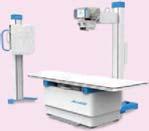




















BUSINESS AVENUES EXPRESS HEALTHCARE EXPRESS HEALTHCARE February2023 23









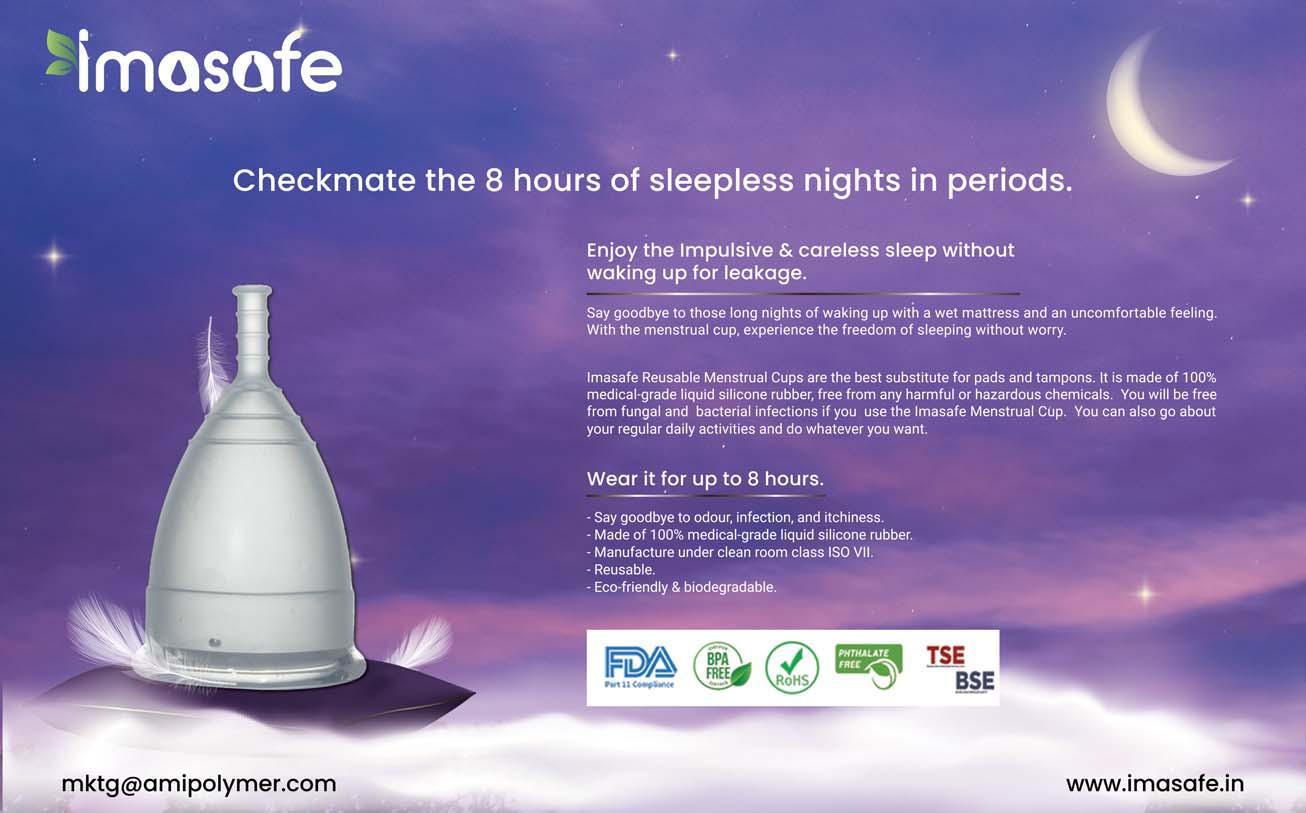
BUSINESS AVENUES EXPRESS HEALTHCARE February2023 EXPRESS HEALTHCARE 24 BlueHeaven SILICONETRANSPARENTTUBING M.K.SiliconeProductsPvt.Ltd. E-mail:sales@mksilicone.com 205&206HillViewIndustrialPremises,AmrutNagar, Ghatkopar(W),Mumbai-400086,India.Tel.:022-25004576 fortheQualityConscious…. INDIA QM002 AnISO9001-2015COMPANY CERTIFIED CLEA N ROOM IS08 Serving Since 1997 To Advertise in Business Avenues Email: rajesh.bhatkal@expressindia.com rbhatkal@gmail.com
















































































































































































































































BUSINESS AVENUES EXPRESS HEALTHCARE EXPRESS HEALTHCARE February2023 25


BUSINESS AVENUES EXPRESS HEALTHCARE February2023 EXPRESS HEALTHCARE 26

BUSINESS AVENUES EXPRESS HEALTHCARE EXPRESS HEALTHCARE February2023 27































BUSINESS AVENUES EXPRESS HEALTHCARE February2023 EXPRESS HEALTHCARE 28

BUSINESS AVENUES EXPRESS HEALTHCARE EXPRESS HEALTHCARE February2023 29
HEALTHCARE TRACKER
Faster diagnosis for better treatment: Specific protein estimation made easywith Mispa iSeries
Thomas John,Managing Director,Agappe explains about his company’s Mispa iSeries which provides high quality protein estimation at affordable costs
As the world is moving fast, everyone is looking for faster diagnostic methodologies for faster treatment and better healthcare. The advanced healthcare technologies, new test parameters and methodologies are the need of the hour for the faster diagnosis and treatments.
Agappe with its 28 years of experience in IVD has always been in the forefront to introduce new age products and technologies for the faster and better diagnosis, thus helping the rural and urban population pan India and 75 plus countries.
A decade ago, nearly 35 per cent of specific protein estimations were done by latex method. The latex methods have its own limitations and longer process to generate the reports pose challenges. Due to this limiting factor of latex testing, there was always uncertainty of results especially, in the borderline areas of reference ranges.
The introduction of Mispa iSeries with the combination of Nephelometry & Immunoturbidimetry Technology for the protein estimation replaced the conventional latex method by providing wide measuring range with high sensitivity and better linearity at an affordable cost.
With the motive to provide high quality protein estimation at affordable costs, Agappe sowed the seed of our intelligent breed -Mispa iSeries in 2011. Within a decade, Mispa iSeries emerged as the game changer in the specific protein testing segment in India as well as 75 plus other countries. At present, in India Agappe has more than 15000+ satisfied customers with i-series instruments like Mispa i2 and Misa i3.

First intelligent breed has launched with 6 parameters onboard during 2011. Second generation Mispa i2, a patented Nephelometry equipment, is launched in 2012 which is purely Indian made product

with a unique patented technology to provide more accurate and reliable results. It serves 25 parameters with better sensitivity and linearity which ensures flexibility in laboratory testing with marginal
investment. The convenient pack size of reagents in 15T and 30 with 35 days open vial stability for Mispa i2 reagents packs make this equipment very much suitable for medium and small labs with lower turnover. Mispa i3 being prefilled individual cartridges has no open vial stability issues, they come in 10s and 30s test packs.
Mispa iSeries instrument follows smart card calibration technology which avoids reagent wastage and lengthy manual calibration errors. It also saves calibration cost, reagent cost and saves time.
disease very fast as well as monitor improvement of the patients. Smart card calibration can be easily estimated without any calibration procedures at an affordable cost. Mispa i3 is an automated prefilled reagent cartridge based Nephelometry analyser which can produce the report within 5 Minutes for the faster diagnosis. Automation with an affordable cost and convenient pack sizes for all special parameters differentiate Mispa i3 with other instruments. The technology used in the equipment has been awarded patent
Hence this feature is quite beneficial for parameters like HbA1c, CRP, RF etc. which require multipoint calibration. Factory calibrated smart card for Mispa i-series helps the users a trouble-free operation as well as a peace of mind.
Third generation protein analyser Mispa i3, with prefilled cartridge, was launched in 2017 which serves 23 parameters with better sensitivity and linearity. The assay panel includes cardiovascular risk profile, allergy profile, covid profile, diabetic profile, rheumatology profile, osteoporosis screen profile like Vitamin D etc. Wide test panels with multiple profiles helps the doctors to diagnose the
from Indian Patent Office in 2022, in addition to 3 Design Registrations.
Mispa iSeries emerged as the game changer in the specific protein testing and the customers first choice in protein estimation. During these hard times of COVID 19, Mispa iSeries served the mankind with the advanced nephelometry method by providing more than 10 million accurate results of COVID prognostic parameter tests like CRP, D DIMER and FERRITIN.
Let us together serve mankind by providing quality products to ensure accurate and reliable results for the faster diagnosis and treatment.
EXPRESS HEALTHCARE February2023 30
Mispa iSeries instrument follows smart card calibration technology which avoids reagent wastage and lengthy manual calibration errors.It also saves calibration cost,reagent cost and saves time
Exias Electrolyte Analyzer: Atechnologypar excellence
S Negi,National Sales Manager,Sowar

Over the years, there has been tremendous technological advancements in medical devices industry with strong focus on providing latest technology that has better features and ease of operation. Each technology that has advanced into medical industry has ensured that it addresses the issues and limitations of the technique or process that was practiced previously.
In the field of IVD, Electrolyte Analyzer has been one of the most commonly used equipment by pathological labs in the hospitals, diagnostic centers & biochemistry departments. ISE (Ion Selective Electrodes) Reagents based analyzer measuring mainly Na+, K+, Cl-/Ca++ has dominated the market for years and still.
These electrolyte analyzers measuring Na+, K+, Ca++/ Cl- essentially require heavy maintenance like frequent replacement of electrodes, reagents, cleaning solutions, conditioning solutions, deprotenizers and AMC/CMC. The shelf life of an electrode is not more than a year as per the manufacturers. That means users need to replace these electrodes (Na+, K+, Ca++/Cl) every year. The cost of each electrode of any manufacturing firm of repute is high. Besides, users have to spend on AMC/ CMC too. That means over the years, users have to spend heavily on the equipment and the cost adds up increasing per test cost. So, the actual cost per test is much higher than what is negotiated at the time of purchase.
The latest state of art technology based Exias Electrolyte Analyzer that has been recently launched by Exias Medical, Austria and exclusively promoted and sold in India by Sowar Medical, a di-

vision of M/S Sowar Private Limited, CSC, C 9, Vasant Kunj, New Delhi - 110070 has addressed all these issues by completely doing away with the costs of frequent replacement of electrodes, cleaning, conditioning solutions, deprotenizers and AMC/CMC. It took Exias Medical five years of R&D to design develop ISE based Exias Electrolyte Analyser. All it requires is an "All in one Cartridge" that has Sensors, solutions, waste, All wear & tear parts like tubings, sample input, and valves etc. within it. The cartridge has in-
electrolyte analyzer in the world that gives results in 25 seconds using only 20 microlitre sample volume.
The built in printer gives results quickly once the details are fed by users. Another key feature of the analyzer is that whenever it goes on calibration mode for a short period of 30 seconds only for two-point calibration, it doesn't affect the numbers of samples while in case of electrodes-based analyzers, frequent calibration directly affects the numbers of samples.
pack size, lower the cost per test. Exias Electrolyte Analyser has its own quality controls required by users to validate the results whenever asked for.
built sample probe.
It measures Na+, K+, Ca++, Cl-, PH & HCT in single aspiration of the sample besides calculated nCa++, Total Hemoglobin. Exias Electrolyte Analyser only requires 20 microlitre of sample vol-
ume (Whole Blood, Serum, Plasma and Undiluted Urine) with results in 25 seconds only. Users have option to use Sample Tube, Capillary or syringe as well.
It is absolutely maintenance free analyzer and only
In Exias Electrolyte Analyzer, Users have options to opt for different cartridges pack sizes of 150 Tests (42 Days on board Shelf life), 300 Tests (42 Days on board shelf life) & 600 Tests (28 Days on board shelf life). Higher the
Exias Electrolyte Analyzer an absolutely maintenance free system with amazing ease of operation is indeed a world class equipment. It will bring drastic changes in the IVD industry with users switching over to it from traditionally used equipment Sowar Medical, a name that has established itself among the top firms in the point of care & IVD has strong Sales, Service & Distribution network all over India catering to needs of it's huge customer base will ensure that Exias Electrolyte Analyzer gets a grand success as well like its flagship product OPTI Blood Gas Analyzer.
February2023 EXPRESS HEALTHCARE 31
KC
Pvt.Ltd.talks about the latest state of art technology based Exias Electrolyte Analyzer that has been recently launched by Exias Medical,Austria and exclusively promoted and sold in India by Sowar Medical
It took Exias Medical five years of R&D to design develop ISE based Exias Electrolyte Analyser.All it requires is an "All in one Cartridge" that has Sensors, solutions,waste, All wear & tear parts like tubings,sample input,and valves etc.within it
Medikabazaar: The game-changer for the dental industryin India
The dental catalogue on Medikabazaar
Medikabazaar is an online platform that has revolutionised the way dental products are bought and sold in India. The platform boasts of having the largest dental catalogue in the country, which includes a wide range of products from some of the most well-known and respected brands in the industry.
The dental catalogue on Medikabazaar is truly a onestop-shop for all dental needs. Whether you are a dentist
one-stop-shop for all dental needs
looking to purchase equipment for your clinic or a laboratory technician looking to buy dental materials, the platform has something to offer everyone. The catalogue includes products such as dental chairs, dental handpieces, dental X-ray machines, dental materials, and much more.
One of the key advantages of using Medikabazaar's online platform is the convenience it offers. Dentists and dental professionals can now
purchase dental products from the comfort of their own homes or offices. The platform is easy to navigate and allows users to search for products based on various criteria such as brand, price, and category. This makes it easy for users to find exactly what they are looking for.
Another advantage of using Medikabazaar's online platform is the competitive pricing. The platform has established partnerships with leading den-
tal manufacturers and suppliers, which allows them to offer their products at very competitive prices. This is great news for dentists and dental professionals who are always on the lookout for ways to save money on their purchases.
In addition to the large dental catalogue, Medikabazaar also offers excellent customer service. The platform has a dedicated customer support team that is always available to assist users with any
queries or concerns they may have. This ensures that users have a smooth and stress-free shopping experience.
Overall, Medikabazaar's online platform is a gamechanger for the dental industry in India. The platform's large dental catalogue, competitive pricing, and excellent customer service make it a must-visit for dentists and dental professionals looking to purchase high-quality products at affordable prices.

EXPRESS HEALTHCARE February2023 32 HEALTHCARE TRACKER
E m a i l : r a j e s h b h a j n i k @ e x p r e s s i n d i a c o m ■ C o n t a c t N o 9 8 6 7 1 4 5 0 2 8 C o m p a n y N a m e - T h e I n d i a n E x p r e s s ( P ) L t d , C o m p a n y A d d r e s s - M a f a t l a l C e n t r e , 7 t h F l o o r , R a m n a t h G o e n k a M a r g , N a r i m a n P o i n t , M u m b a i - 4 0 0 0 2 1 B a n k N a m e - H D F C B a n k L t d ● B a n k A d d r e s s - C- 5 / 3 2 , S a f d a r j u n g D e v e l o p m e n t A r e a ( S D A ) , N e w D e l h i - 1 1 0 0 1 6 ● A c c o u n t - 0 0 3 2 8 6 3 0 0 0 0 0 7 5 ● S w i f t C o d e - H D F C I N B B ● I F S C - H D F C 0 0 0 0 0 3 2 A c c o u n t T y p e - C u r r e n t
is truly a
Sequoia Healthcare introduces the inspiration 64 Slice CTScanner
It provides exceptional CTexperience for the end users
Sequoia Healthcare, based out of Bangalore and intensely focused on driving global innova tion in the imaging solution segment manufactured indigenously in the country, has launched an advanced yet affordable Inspiration 64 Slice CT scanner with smart features and bore design recently.

The Inspiration 64-smart large bore Slice CT Scanner
comes with a 3D vision camera with auto-positioning and remote control. It brings in the finest quality of images and stable performance consisting of innovative workflow for topogram to diagnosis by generating HD Image Chain of 024 matrix. It is a new detector design for shortening the X-RAY path and improving on the image quality with the help of a 75 cm Gantry aperture that offers extra
scan facilities as compared to the standard scanning.
According to S. Viswanathan, Chief Executive Officer, Sequoia Healthcare, “The company’s purpose is to improve the quality of human life by helping healthcare providers to do more with technology. It guides our actions and is the key to deliver our strategy. Inspiration 64’s precision tomography is independently developed in a Hi-
Resolution, High-Definition Algorithm. Inspiration 64 adopts a unique low-dose technique to minimise the radiation dose to patients, which is better known as iDream. The adequate X-Ray tube heat storage and generator capacity are increased 2.7 times with the help of iDream software.
He further said, “Sequoia Healthcare strives to bring in advanced and affordable in-
ternational technology, which serves in cost-effective healthcare. Sequoia believes in delivering radiology equipment accessibility for cost-effective healthcare. In short, we want to bring diagnostic reach to all. With high-tech services accompanied with new world Artificial Intelligence (AI), robotics, etc., Sequoia aims to become the number imaging devices manufacturer in the world.”
February2023 EXPRESS HEALTHCARE 33 HEALTHCARE TRACKER
HEALTHCARE TRACKER
28th edition of Medical Fair India to be held from 27th-29th April 2023
Industry gears up for the upcoming 28th edition of MEDICALFAIR INDIAto be held from 27th - 29th April 2023 at Pragati Maidan,New Delhi
India’s healthcare has become one of India’s largest sectors in revenue and employment. The Indian healthcare sector is growing at a brisk pace due to its strengthening coverage, services, and increasing expenditure by public as well as private players. In the Economic Survey of 2022, India’s public expenditure on healthcare stood at 2.1 per cent of GDP in 2021-22 against 1.8 per cent in 2020-21 and 1.3 per cent in 2019-20. Against the backdrop of this unprecedented growth, the 28th edition of MEDICAL FAIR INDIA will open doors from 27-29 April 2023 at Pragati Maidan, New Delhi.
As part of Messe Düsseldorf Group's `MEDICAlliance' medical exhibition portfolio, MEDICAL FAIR INDIA is organised by Messe Düsseldorf India with the support of the Association of Healthcare Providers India (AHPI), Association of Indian Manufacturers of Medical Devices (AIMED), Association of Diagnostic Manufacturers of India (ADMI), Quality and Accreditation Institute (QAI) and Voice of Healthcare (VOH), GMAAF - Global Medtech Advocacy & Advisory Forum, NASSCOM Center of excellence – IoT & AI and Healthcare Events as Knowledge partner for Clin Lab Conference.
MEDICAL FAIR INDIA
2023 is set to host an integrated communication and trade platform for over 10,000+ visitors and delegates to network and conduct business this time. The three-day show sees increasing participation from leading medical technology providers, equipment, consumables, hospital furniture, surgical instruments, components, laboratory, life science, pharmacy, and Infrastructure categories to name a few this year.
The International market
has once again embraced this show wherein companies from 14 countries will be exhibiting their products, services & innovations. The countries include Austria, Canada, China, Germany, Hungary, India, Italy, Japan, Malaysia, South Korea, Taiwan, Thailand, Turkey, The United States of America, and the United Kingdom. A total of 400+ Indian and International exhibitors will be presenting their most cutting-edge products and technologies to the global audience. The well-segmented exhibition, spread across an area of 16000+ square meters, will welcome visitors from various healthcare fraternities.
Special segments at MEDICALFAIR INDIA
◆ Make in India Pavilion: Supported by the Association of Indian Manufacturers of Medical Devices (AIMED).
◆ Clin Lab India: An exhibition & Conference focusing on the Globalisation of the Indian IVD Industry; a key driver for startups, Academia, and Government & Industry.
◆ FTR4H: A three-day conference on Big Data, Artificial Intelligence and Personalisation
at Scale.
◆ Voice of Healthcare & Smart Hospitals Conference: A day-long conference focuses on Ideas, Synergy and collaboration and an opportunity for Small Hospitals to “THINK FUTURE SMART” and focus on providing solutions to meet the needs of Smart Patients.
◆ Rehaindia: powered by REHACARE to attract all the categories of stakeholders in the rehabilitation segment. This segment will be purely dedicated to the rehabilitation sector in India.
Unlimited networking opportunities
The exhibitors as well as the visitors will encounter unlimited opportunities to convene, exchange dialogues and conduct business. A comprehensive program has been curated for the visitors with the perfect combination of exhibition showcases, special zone, and technical conferences.
Rajiv Nath, Managing Director, Hindustan Syringes & Medical Devices and Forum Coordinator-AiMeD ( Association of Indian Medical Devices Industry) and Chairman of the Advisory Committee, Medical
Fair India 2023 stated, “I appreciate the efforts put in by the Messe Düsseldorf team for raising the quality of exhibitions, conferences and awards over the years. This has led to more involvement and evolvement of the medical and health care manufacturing industry. We believe PM Shri. Narendra Modi’s call for self-reliance and an Aatmanirbhar Bharat will not only see India emerging as a manufacturing superpower but will also strengthen India to vie for being the 2nd factory in world for medical devices & a dependable Manufacturer of quality products in the global supply chain. We have shown the ability and capability of Indian Entrepreneurs during COVID to Make in India. This is India’s moment for establishing supremacy in the healthcare field. Expos such as Medical Fair India play an important role in furthering collaboration and innovation within the industry. The bigger and better 2023 edition will have The Make in India Pavilion at the show featuring some of the indigenous innovation that will help shape the future of Indian healthcare.”
The longing for in-person
meetings and business interactions is driving the anticipation with which the industries are looking to explore how the latest digital technologies and new approaches shape healthcare. MEDICAL FAIR INDIA is well known for its ability to detect trends and respond to market impulse, diverse solutions to diverse healthcare needs.
Looking forward to the show, Thomas Schlitt, Managing Director, Messe Düsseldorf India, says, “India’s healthcare ecosystem is pivotal to realising the nation’s goal of a $5 trillion economy. The growth of the healthcare sector will be augmented by technological innovations coupled with accessible and affordable care. This impetus is fundamental in achieving India’s aim of creating an integrated national healthcare system. With over 400 companies exhibiting with us from across 14 countries, the event will showcase state-ofthe-art technologies and products. MEDICAL FAIR INDIA 2023 will act as a mega stage for the Indian healthcare industry to foster innovation and enhance collaboration within the industry.”
EXPRESS HEALTHCARE February2023 34
As part of Messe Düsseldorf Group's `MEDICAlliance' medical exhibition portfolio,MEDICALFAIR INDIAis organised by Messe Düsseldorf India
Aplioaintegratesindustry-leadingimaging,advancedapplications, andsmartworkflowsintoasmall,lightweightpackage. Thesystemcanbescaledforawidevarietyofclinicalportfolios fromsharedservicestodedicated,specializedapplicationsstrengtheningyourclinicalconfidenceevenforthemost demandingcases.


©CanonMedicalSystemsCorporation2022.Allrightsreserved. ERBISENGINEERINGCOMPANYLIMITED 39SecondMainRoad,RajaAnnamalaipuram,Chennai-600028.Tel:04442961400MailID: info@erbismedical.com https://global.medical.canon/ Advanced.Seamless.Integrated.
REGD.WITH RNI NO.MAHENG/2007/22045,POSTAL REGD.NO.MCS/162/2022 – 24,PUBLISHED ON 8TH EVERY MONTH, POSTED ON 14TH,15TH,16TH EVERY MONTH,POSTED AT MUMBAI PATRIKA CHANNEL SORTING OFFICE,MUMBAI – 400001



Evolutionof










































































































































































TEL:+914842867000|productcorp@agappe.in|www.agappe.com














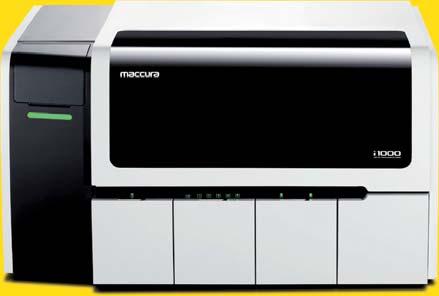





















































































18004257151/18008917251/18002707151 Toll Free ScanHere formoreinfo
mmunoassays fromAgappe AUTOMATICCHEMILUMINESCENCEIMMUNOASSAYSYSTEM
CartridgeBasedSpecificProteinAnalyzer
SerumProteinAnalyzer
SpecificProteinAnalyzer
Launchedon2008 Launchedon2011
Launchedon2015 Launchedon2022 “AgappeHills”,Pattimattom(PO),Dist.Ernakulam,Kerala-683562,India.













































































 ByKalyani Sharma
ByKalyani Sharma






























































































































































































































